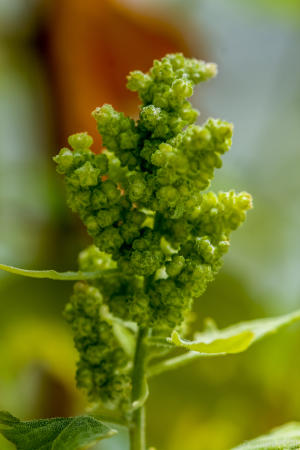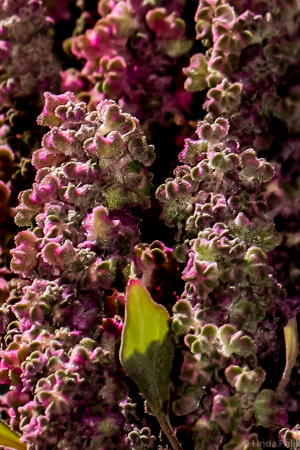Using AI to control energy for indoor agriculture
30 September 2024
Published online 9 February 2017
The complexity of quinoa’s genome brings the promise of improving and expanding crops in hostile environments previously unfit for agriculture.

© Linda Polik, KAUST
Mark Tester, professor of plant science at King Abdullah University of Science and Technology (KAUST) in Saudi Arabia, and colleagues, sequenced the genome of a Chilean coastal variety of quinoa, along with the genomes of some of its close relatives, providing insights into quinoa’s genetic diversity, biology and the evolution of its genome.
“We’re trying to use genomics and genetics to unlock sand and sea,” Tester tells Nature Middle East, referring to the potential of harnessing desert, seawater and partially desalinized seawater for agricultural purposes. “Quinoa has massive potential to make a big contribution to global food security because it can grow on marginal lands or lands beyond the margin.”
Quinoa, he says, can be grown using land and water not viable for traditional agriculture. The plant "is already good," he adds. "But we can make it better and that requires both increasing its salinity tolerance and industrializing the crop."
Tester’s work at KAUST concentrates on enabling plants to thrive in sub-optimal soil conditions.
Quinoa is already very salt-tolerant, and can be grown in sand, using low-quality water, but it’s far from industrialized. Several scientists would argue that it’s still partially domesticated.
Its tolerance for salinity needs to be amplified, and presently, it is very genetically variable. “It’s tall, it falls over, it branches out, and it’s got all sorts of things wrong with it. But there are lots of opportunities to improve quinoa, because there are lots of genetic variations. For broad-acre agriculture, we have to make it, within a variety, homogeneous,” says Tester.
Few resources have been available to push for the genetic improvement of quinoa until Tester’s study, published online this week in Nature, which reports the sequencing of two diploids from the ancestral gene pools of quinoa, enabling the identification of sub-genomes.
To assemble a chromosome-scale reference sequence that covers nearly the whole genome, Tester and colleagues used single-molecule, real-time sequencing in addition to genetic mapping techniques. It was no easy feat given that 64% of the quinoa genome consists of repetitive DNA, making it harder to pinpoint clusters of unique sequence needed for a complete picture of quinoa’s genome.
The study’s findings should accelerate genetic improvement and help breeding strategy efforts for the low-glycaemic-index, versatile crop that is rich in essential amino acids, fibre, fats, carbohydrates, vitamins and minerals, and whose yield varieties can help diversify the world's food basket
Despite its resilience to a wide range of environmental conditions, quinoa’s agronomic traits need tweaking to allow more widespread production. "We need to get the plant to look more like a wheat plant," says Tester.

“It makes it not so nice for birds to steal,” jokes Tester.
It is because of this bitterness that the quinoa crop needs to be processed — its shell removed and seeds washed — to make it edible.
The genetic markers identified in the study may be used to popularize quinoa by developing non-bitter or sweet commercial varieties with reduced saponin levels, say the research authors.
“Now that we have a reference genome, our plan over the next year is to sequence another 400 high-quality genomes,” says Tester. “Once you’ve got that, you can start to build a picture about how different varieties of quinoa are related to each other, genetically, and where the variations are in the genomes."
The world cannot continue to rely on major crops alone to increase its food security, and thanks to genetics made more powerful because of genomics, scientists can expand the global crop portfolio more rapidly now, says Tester. “There’s a process called genomic selection where you’ll able to ease into a genome several hundred different traits, a lot of it in parallel.”
His study may be another step towards utilizing different strategies for accelerating breeding and improving crops rapidly and powerfully.
doi:10.1038/nmiddleeast.2017.29
Stay connected: